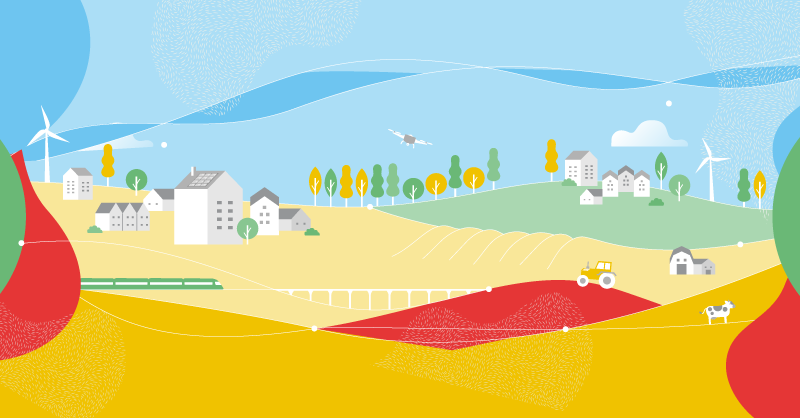
Are you searching for the population density, the average distance to healthcare facilities or the broadband speed in any rural area, municipality, or region in the European Union? It is now possible thanks to the newly launched rural observatory.
Set up by the European Commission, the new rural observatory provides users with a wealth of information in just one click about any given urban, intermediate and rural areas in EU countries. More and better data are essential to understand the rural dimension of economic, social and demographic conditions and to act on them. The observatory makes it possible to compare diverse territories to reflect the multiple dimensions and the diversity of rural areas. This observatory will be used to inform policy-making relating to rural areas, to evaluate the impact of EU initiatives in a variety of policy domains (what is called rural proofing), and to track progress on relevant indicators for the EU Rural Action Plan and the Rural Pact. It will also regularly provide updated evidence, including for further policy-making.
Data are organised in different sections. “Rural Focus” shows how rural areas in each country compare with those classified as urban or intermediate using indicators under the following topics:
- Demography and Migration
- Economic Development
- Labour Market
- Tourism
- Education
- Infrastructure & Accessibility
- Social Inclusion
- Environment and Climate
- Health.
Under “Trends”, users can visualise on a map these indicators and compare regions, sub-regions and municipalities. Whenever possible, future projections are also displayed.
The section called “My Place” gives a detailed overview of any municipality. In the case of a city or town, it can show:
- the population, its density and its evolution overtime,
- the breakdown of land use,
- the GDP,
- the broadband speed,
- the available number of rooms for tourism,
- the average distances to schools, health facilities, train stations and cinemas.
The platform can also compare different places, big or small, across all these categories.
In addition to these functionalities, several research papers on different aspects of rural life will be published by the observatory every year. This living platform, maintained by the Joint Research Centre, will be updated regularly with new indicators and data visualisation. New collaborative tools will also be added on the website dedicated to the EU’s rural vision to better serve the needs of EU’s rural areas and notably of the Rural Pact Community.
Background
Europe’s rural areas provide us with our food, homes, jobs, and essential ecosystems services. To ensure that rural areas can continue to play these essential roles, the European Commission set out in 2021 a long-term vision for the EU’s rural areas up to 2040. It identifies areas of action towards stronger, connected, resilient and prosperous rural areas and communities. A Rural Pact and an EU Rural Action Plan with tangible flagships and new tools help achieve the overall policy objectives.
Over €60 billion is available for rural development under the Common Agricultural Policy for the period 2023-27. Under the new CAP, at least 35% of these funds will be allocated to measures to support local development, climate, biodiversity, environment and animal welfare.
Over 25% of EU cohesion policy investments for the 2014-20 period also helped keep rural areas strong. Cohesion policy will continue to invest in rural areas through the partnership agreements and operational programmes of the new programming period.
Related links
Details
- Publication date
- 26 January 2023
- Author
- Directorate-General for Agriculture and Rural Development
- Location
- Brussels
